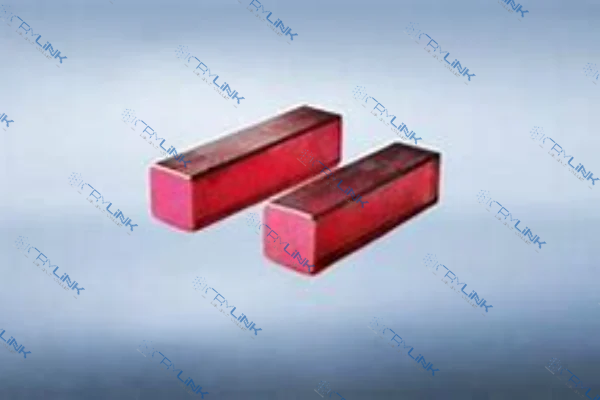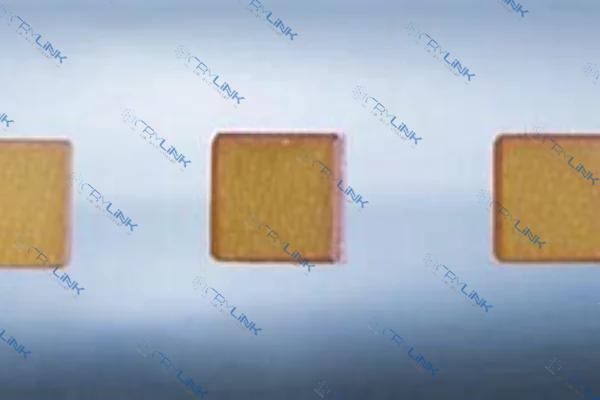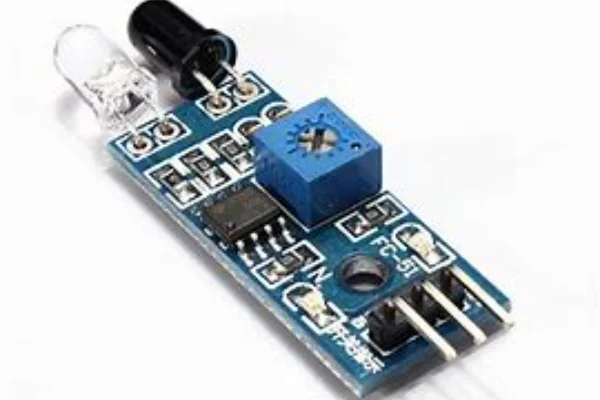Introduction to Nonlinear Crystals
Understanding Nonlinear Crystals
Nonlinear crystals play a vital role in various optical applications. Among them, BaGa2GeSe6 and LiGaS2 are two prominent materials. In this article, we will delve into their physical properties, nonlinear coefficients, transparency windows, and applications in lasers and optical communication.
Physical Properties
The physical properties of both BaGa2GeSe6 and LiGaS2 are not only fascinating but also crucial in determining their applications in various optical fields. While we have already explored their structure, composition, and optical properties, there are more aspects to consider.
The thermal conductivity of BaGa2GeSe6 is relatively low, which can be an advantage in certain applications where heat management is not a critical concern. Its hardness and mechanical stability also contribute to its suitability in robust environments where physical stress might be a factor.
LiGaS2, on the other hand, has a higher thermal conductivity, making it more suitable for applications where efficient heat dissipation is required. Its mechanical properties are also noteworthy, with a hardness that makes it resilient to physical wear and tear.
The refractive indices of both crystals are another vital aspect to consider. BaGa2GeSe6 has a specific refractive index that allows for efficient phase matching in a variety of configurations. This makes it highly adaptable to different optical setups and enhances its utility in nonlinear optical processes.
LiGaS2’s refractive index is tailored to its unique crystalline structure, allowing for broader phase-matching capabilities. This broad phase-matching ability makes LiGaS2 a versatile choice for a wide range of nonlinear optical applications, including second harmonic generation (SHG) and difference frequency generation (DFG).
The birefringence properties of these crystals also play a role in their application. BaGa2GeSe6’s birefringence is well-suited for frequency conversion processes, while LiGaS2’s birefringence properties make it an excellent choice for optical parametric oscillation (OPO) applications.
In terms of environmental stability, both crystals exhibit good resistance to humidity and other environmental factors. This ensures long-term reliability and performance in various operating conditions.
In conclusion, the physical properties of BaGa2GeSe6 and LiGaS2, including their structure, composition, optical properties, thermal conductivity, hardness, refractive indices, birefringence, and environmental stability, make them highly valuable in the field of nonlinear optics. Their unique characteristics define their suitability for specific applications, and understanding these properties is essential for optimizing their use in lasers, optical communication, and other optical technologies.
Nonlinear Coefficients
The nonlinear coefficients of a crystal are fundamental in determining its efficiency in nonlinear optical processes. These coefficients are responsible for the interaction between different light waves within the crystal, leading to phenomena such as frequency conversion, harmonic generation, and parametric amplification.

BaGa2GeSe6 Nonlinear Coefficients
BaGa2GeSe6 is renowned for its strong nonlinear coefficients. These coefficients enable efficient frequency conversion processes, such as second harmonic generation (SHG) and sum frequency generation (SFG). The crystal’s phase-matching capabilities further enhance these processes, allowing for a wide range of wavelengths to be converted efficiently.
The nonlinear coefficients of BaGa2GeSe6 also play a vital role in its application in optical parametric oscillators (OPOs). These devices rely on the nonlinear interaction between light waves to generate new frequencies, and the strong nonlinear coefficients of BaGa2GeSe6 make it an attractive choice for such applications.
LiGaS2 Nonlinear Coefficients
LiGaS2 stands out for its even higher nonlinear coefficients. These coefficients enable more efficient nonlinear optical processes, making LiGaS2 a preferred choice for applications requiring high conversion efficiency.
The high nonlinear coefficients of LiGaS2 make it particularly suitable for difference frequency generation (DFG), where two different frequencies are combined to produce a new frequency. The efficiency of this process is directly related to the nonlinear coefficients, and LiGaS2’s high values make it an excellent candidate for DFG.
LiGaS2’s nonlinear coefficients also make it a popular choice for optical parametric amplification (OPA), where a signal wave is amplified by interacting with a pump wave within the crystal. The high nonlinear coefficients of LiGaS2 enable strong amplification, making it a valuable material for applications requiring intense light amplification.

Comparison and Applications
The comparison between the nonlinear coefficients of BaGa2GeSe6 and LiGaS2 reveals significant differences that translate into distinct applications. While BaGa2GeSe6’s strong nonlinear coefficients make it suitable for a wide range of frequency conversion processes, LiGaS2’s even higher values provide more efficiency in specific applications such as DFG and OPA.
Understanding the nonlinear coefficients of these crystals is essential for optimizing their use in various optical technologies. Researchers and engineers must carefully consider these values when designing optical systems to ensure that the chosen material aligns with the desired application’s requirements.
In summary, both BaGa2GeSe6 and LiGaS2 offer unique nonlinear coefficients that define their roles in nonlinear optics. Their distinct characteristics make them valuable in different applications, and a thorough understanding of these coefficients is crucial for leveraging their full potential in optical systems.
Transparency Windows
The transparency window of a nonlinear crystal is the range of wavelengths over which it remains transparent. This property is crucial in determining the crystal’s suitability for various optical applications, as it defines the range of wavelengths that can be efficiently transmitted through the crystal without significant absorption or scattering.
BaGa2GeSe6 Transparency Windows
The transparency window of BaGa2GeSe6 ranges from the visible to the mid-infrared spectrum. This wide range allows BaGa2GeSe6 to be used in a diverse array of applications, from visible light lasers to infrared sensors and imaging systems. The broad transparency window also enables BaGa2GeSe6 to be used in nonlinear frequency conversion processes across a wide range of wavelengths, providing flexibility in designing optical systems.
The wide transparency window of BaGa2GeSe6 is a result of its unique crystalline structure and composition, which minimize absorption and scattering losses within the crystal. This ensures that light can pass through the crystal efficiently, making BaGa2GeSe6 a preferred choice for applications requiring high transmission efficiency across a broad spectrum.

LiGaS2 Transparency Windows
LiGaS2 offers a transparency window that extends even further into the infrared region. This extended range provides additional opportunities for specific applications, particularly those requiring transmission of long-wavelength infrared light. LiGaS2’s transparency window makes it suitable for applications such as thermal imaging, remote sensing, and environmental monitoring, where the ability to detect and transmit infrared light is essential.
The extended transparency window of LiGaS2 also enhances its utility in nonlinear optical processes, such as optical parametric oscillation (OPO) and difference frequency generation (DFG). The ability to transmit long-wavelength infrared light allows LiGaS2 to be used in generating and detecting frequencies that are beyond the reach of other nonlinear crystals, providing unique capabilities in optical systems.
Comparison and Implications
The comparison between the transparency windows of BaGa2GeSe6 and LiGaS2 reveals distinct characteristics that translate into different applications. While BaGa2GeSe6’s wide transparency window offers versatility across the visible to mid-infrared spectrum, LiGaS2’s extended range into the infrared region provides specific advantages in applications requiring long-wavelength transmission.
The choice between these two crystals must be carefully considered based on the specific requirements of the application. Factors such as the desired wavelength range, transmission efficiency, and nonlinear process must be taken into account to select the most suitable material.
In conclusion, the transparency windows of BaGa2GeSe6 and LiGaS2 are defining characteristics that determine their roles in various optical applications. Their unique transparency windows offer distinct advantages and opportunities, and understanding these properties is essential for leveraging their full potential in optical systems. Whether for general-purpose applications or specialized infrared systems, these crystals provide valuable options for researchers and engineers in the field of optics.

Applications in Lasers and Optical Communication
The applications of nonlinear crystals in lasers and optical communication are vast and varied, with BaGa2GeSe6 and LiGaS2 playing significant roles in these fields. Their unique properties make them suitable for specific applications, and understanding these applications is essential for leveraging their full potential.
BaGa2GeSe6 in Lasers
BaGa2GeSe6 is widely used in lasers for frequency doubling and other nonlinear processes. Its strong nonlinear coefficients and broad transparency window make it an attractive choice for generating harmonics and converting frequencies in laser systems. Whether in solid-state lasers or fiber lasers, BaGa2GeSe6’s properties enable efficient frequency conversion, enhancing the versatility and performance of laser systems. Its applications extend to medical lasers, industrial lasers, and scientific research, where precise control over laser frequencies is required.
LiGaS2 in Optical Communication
On the other hand, LiGaS2 finds extensive applications in optical communication, particularly in signal processing and wavelength conversion. Its high nonlinear coefficients and extended transparency window into the infrared region make it suitable for manipulating optical signals in communication systems. LiGaS2 is used in devices such as optical parametric amplifiers (OPAs) and wavelength converters, where it enables efficient signal amplification and wavelength shifting. Its applications in optical communication contribute to higher data rates, increased signal integrity, and more flexible network configurations.

Conclusion
The comparison between BaGa2GeSe6 and LiGaS2 reveals distinct characteristics and applications. While BaGa2GeSe6 is known for its thermal stability and wide transparency window, LiGaS2 stands out for its higher nonlinear coefficients and broader phase-matching capability. Both materials have unique advantages, making them suitable for various optical applications, including lasers and optical communication.
FAQs
- What are the main differences between BaGa2GeSe6 and LiGaS2?
- BaGa2GeSe6 and LiGaS2 differ mainly in their physical properties, nonlinear coefficients, and transparency windows.
- Where are BaGa2GeSe6 and LiGaS2 used?
- They are used in various optical applications, including lasers and optical communication.
- Why is LiGaS2 preferred for certain applications?
- LiGaS2 is preferred for specific applications due to its higher nonlinear coefficients and broader phase-matching capability.
- What makes BaGa2GeSe6 suitable for lasers?
- BaGa2GeSe6’s wide transparency window and strong nonlinear coefficients make it suitable for lasers.
- Can BaGa2GeSe6 and LiGaS2 be used interchangeably?
- While they have some similarities, their distinct characteristics make them suitable for different applications, and they are not generally interchangeable.

Frank
Frank graduated from the University of Shanghai for Science and Technology, majoring in optics. As a technical engineer at Crylink Company, he deeply understands crystal materials and laser components.
Related Video(s) with this Article
Related Product(s) with this Article
Related Application(s) with this Article
